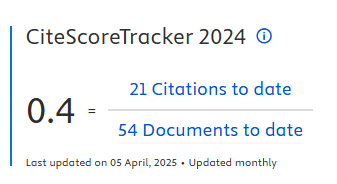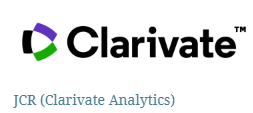Virtuality as a precondition and necessity for the mankind development
DOI:
https://doi.org/10.5585/iji.v8i3.16010Keywords:
Virtuality, Irrational nature of human, Nash equilibrium, Interaction, Positive externality, Negative externality.Abstract
Objective of the study: The research aims at exploring the way of interaction between virtual and physical reality and defining the approaches to analyze consequences of the virtuality penetration to the real world or vice versa.
Methodology / approach: We apply a game theoretic method based on payoff matrix to show the essence of interaction between virtual and physical worlds; an internalization approach for solving optimization problem; graphical visualization of the interaction by using cones movement approach and analysis of cost functions to develop an equation of the city’s economy and to rebuild a model of optimal city size.
Originality / Relevance: The majority of economic approaches have a linear-minded nature and only some take into account technological aspect. We state that the solution lies in consideration the costs as function of positive and negative exponential externalities. The proposed cost-based approach allows finding the optimal distribution of the time staying in the virtual and physical space.
Main results: Obtained results of the research proved the following assumptions: interaction with new reality has changed us; a human is irrational in absolute majority; virtuality is a threat and an opportunity to the human. We confirmed that the nature of interaction between physical and virtual reality should takes the form of cooperation to ensure the mankind development.
Theoretical / methodological contributions: It is one of the first attempts to develop economic theories and methods by extending them with variables of virtual reality.
Social / management contributions: The study presents a broader view on human who exists on the fringes of physical and virtual reality.
Downloads
References
Benedikter, R. (2017). Homo deus? Das Zusammenwachsen von Mensch und Maschine. Analysen & Argumente, 270.
Bhalavat, K. (2018). Augmented Reality to Teleport you into Virtual Worlds. Retrieved from https://www.linkedin.com/pulse/augmented-reality-teleport-you-virtual-worlds-keyur-bhalavat (Accessed 9 June 2018).
Blissing, B. (2016). Driving in Virtual Reality Investigations in Effects of Latency and Level of Virtuality, LiU-Tryck: Linköping University, Sweden.
Carvalho, G., Kovaleski, J., Carvalho, H., Corrêa, R., Sokulski, C. & Kolotelo, J. (2018). The Impact of Organizational Innovativeness on Product-oriented innovativeness in Agro-industrial micro and small businesses. International Journal of Innovation, 6(3), 217-231. doi:10.5585/iji.v6i3.312
Danaher, J. (2017). The Reality of Virtual Reality: A Philosophical Analysis, Institute for Ethics and Emerging Technologies. Retrieved from https://ieet.org/index.php/IEET2/more%20/Danaher20170918?fbclid=IwAR3ZFzTXshqW9Ko81a8YuF4UIOhp3TuZY2mOTg1ldINUFe2382xly9ms7wI (Accessed 18 September 2017).
Google Books Ngram Viewer. Available at: https://books.google.com/ngrams.
Hurnyak, I. & Kordonska, A. (2018a). “Taste of Life” as a Mechanism of Corruption Overcoming. Comparative Economic Research. Central and Eastern Europe, 21(2): 69-80. doi:10.2478/cer-2018-0012
Hurnyak, I. & Kordonska, A. (2018b). Efficient Use of Common Resources in Conditions of Sustainable Development. Torun International Studies, 1(11): 75-87. doi:10.12775/TIS.2018.007
Hurnyak, I. & Kordonska, A. (2019). Analysis of Institutions Interaction in Ukrainian Economy by Using Game Theory Models. Przegląd Wschodnioeuropejski, X/1: 139-151.
Kagan, J. (2018). Pigovian Tax, Investopedia. Retrieved from https://www.investopedia.com/terms/p/pigoviantax.asp (Accessed 2 May 2018).
Kaku, M. (2008). Physics of the Future: How Science Will Shape Human Destiny And Our Daily Lives by the Year 2100. Doubleday, New York.
Kim, M. (2015). The Good and the Bad of Escaping to Virtual Reality. The Atlantic. Retrieved from https://www.theatlantic.com/health/archive/2015/02/the-good-and-the-bad-of-escaping-to-virtual-reality/385134/ (Accessed 18 February 2015).
Kurzweil, R. (2003). Foreword to Virtual Humans. Kurzweil Accelerating Intelligence. Retrieved from https://www.kurzweilai.net/foreword-to-virtual-humans (Accessed 20 October 2003).
Marr, B. (2019). 5 Important Augmented and Virtual Reality Trends for 2019 Everyone Should Read. Forbes. Retrieved from https://www.forbes.com/sites/bernardmarr/2019/01/14/5-important-augmented-and-virtual-reality-trends-for-2019-everyone-should-read/#5cb2953c22e7 (Accessed 14 January 2019).
Pham, Q. & Huynh, M. (2018). Learning achievement and knowledge transfer: the impact factor of e-learning system at Bach Khoa University, Vietnam. International Journal of Innovation, 6(3): 194-206. doi:10.5585/iji.v6i2.235
Richardson, H.W. (1972). Optimality City Size, Systems of Cities and Urban Policy: A Sceptic’s View. Urban Studies, 9(1): 29-48. doi:10.1080/00420987220080021
Schaller, R. (1997). Moore’s law: past, present and future. IEEE Spectrum, 34(6): 52-59. doi:10.1109/6.591665
The Guardian (2011). At war with World of Warcraft: an addict tells his story. Retrieved from https://www.theguardian.com/technology/2011/aug/29/world-of-warcraft-video-game-addict (Accessed 29 August 2011).
Varian, H.R. (2010). Intermediate Microeconomics. A Modern Approach, W. W. Norton & Company, New York.
Zion Market Research (2019). Global Augmented and Virtual Reality Market Will Reach USD 814.7 Billion By 2025. Retrieved from https://www.globenewswire.com/news-release/2019/02/21/1739121/0/en/Global-Augmented-and-Virtual-Reality-Market-Will-Reach-USD-814-7-Billion-By-2025-Zion-Market-Research.html (Accessed 21 February 2019).
Downloads
Published
How to Cite
Issue
Section
License
Copyright (c) 2020 Ihor Hurnyak, Aleksandra Kordonska

This work is licensed under a Creative Commons Attribution-NonCommercial-ShareAlike 4.0 International License.
10.35575/rvucn.n73a3
- Abstract 609
- PDF 408











